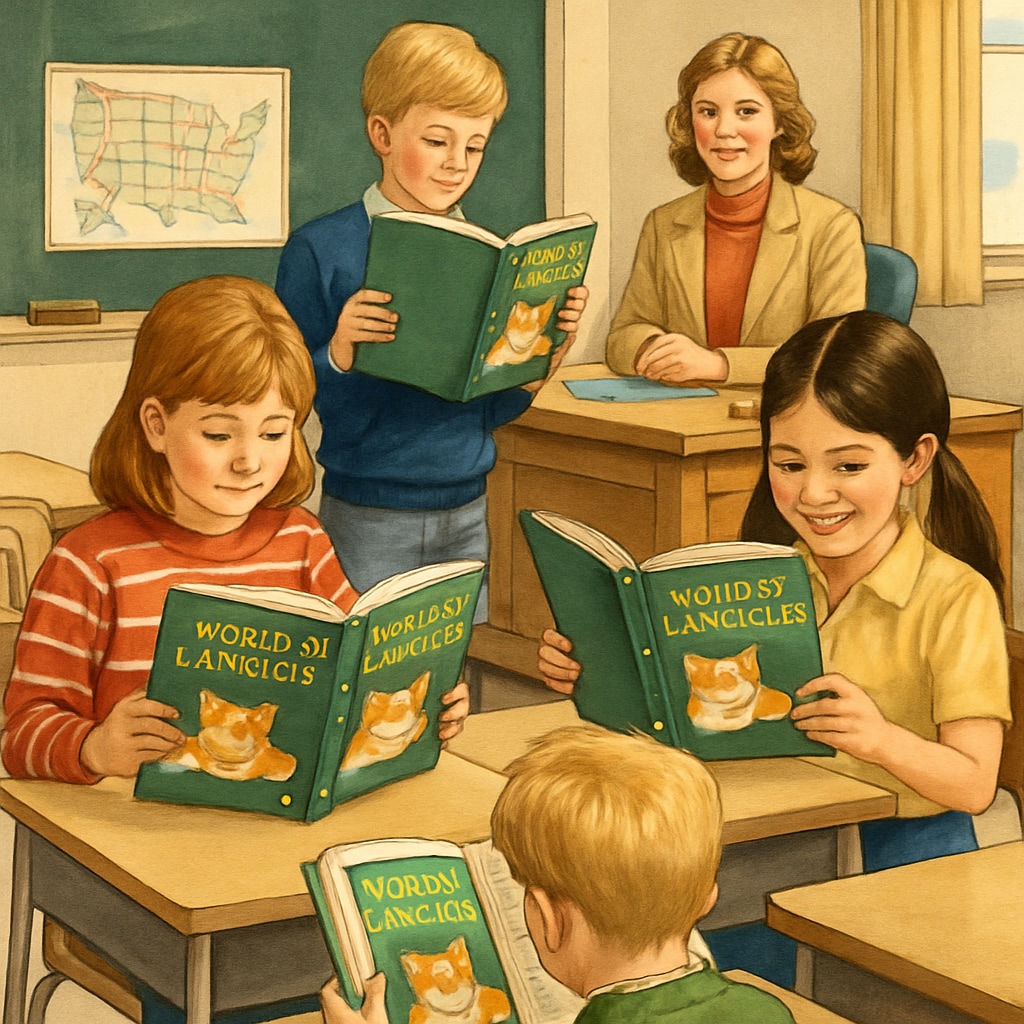The “World of Language” series has earned a special place in the hearts of those who experienced elementary education during the 1980s and 90s. Known for its engaging content, colorful illustrations, and memorable teaching methods, this language textbook series made learning an exciting journey for young minds. Among its various editions, the third-grade textbook, adorned with an iconic cat cover, stands out as a symbol of childhood learning experiences.

A Pioneer in Language Education
In an era when educational resources were far from the abundance we see today, “World of Language” provided a structured and effective approach to teaching foundational English skills. Developed by seasoned educators, the series emphasized grammar, vocabulary, reading comprehension, and sentence construction. Its lessons were tailored for young learners, using relatable themes, playful exercises, and clear examples to demystify complex language rules.
For instance, the third-grade textbook with the cat cover introduced students to sentence diagramming, punctuation rules, and story composition. These exercises were built on progressive difficulty levels, ensuring that every child could follow along and achieve mastery. The focus was not only on academic performance but also on nurturing creativity through written expression.
What Made “World of Language” Stand Out?
Several features distinguished “World of Language” from other elementary language textbooks. First, its visual appeal was unmatched. The playful illustrations, such as the friendly cat on the cover, helped create a welcoming atmosphere that encouraged learning. Second, its content struck a balance between academic rigor and entertainment, making lessons enjoyable rather than daunting.
Another notable aspect was the textbook’s ability to adapt to diverse classroom settings. Whether used in group activities or individual assignments, teachers found its layout flexible and engaging. Additionally, the inclusion of review sections and quizzes ensured knowledge retention while reducing the stress associated with traditional assessments.

Lessons for Modern Education
As digital tools and online resources dominate today’s educational landscape, it’s worth reflecting on the enduring value of textbooks like “World of Language.” While modern platforms offer convenience and interactivity, they often lack the simplicity and tactile engagement of physical books. This series reminds us that effective teaching doesn’t always require flashy technology—sometimes, it’s the thoughtful design and relatable content that truly resonate with students.
Educators can draw inspiration from “World of Language” by integrating its principles into contemporary teaching strategies. For example:
- Designing content with clear progression and achievable milestones.
- Balancing academic rigor with fun and creativity.
- Using storytelling and relatable themes to build connections with learners.
By revisiting classics like this, we can strike a balance between the past and present, ensuring that foundational skills remain a priority in education.
A Nostalgic Legacy
The “World of Language” series, especially the third-grade textbook with its charming cat cover, continues to evoke fond memories for students and teachers alike. Its impact on shaping language skills and fostering creativity endures as a testament to effective educational design. As we navigate the complexities of modern teaching, taking a moment to appreciate such timeless resources can help us refine our approaches and rekindle our passion for education.
To learn more about the evolution of elementary education during the 20th century, consider exploring resources like education on Britannica or education in the US on Wikipedia.
Readability guidance: Short paragraphs, clear language, and a mix of narrative and analytical content ensure accessibility. Lists are used to summarize key points for easy reference, and over 30% of sentences include transitional words to maintain flow.


